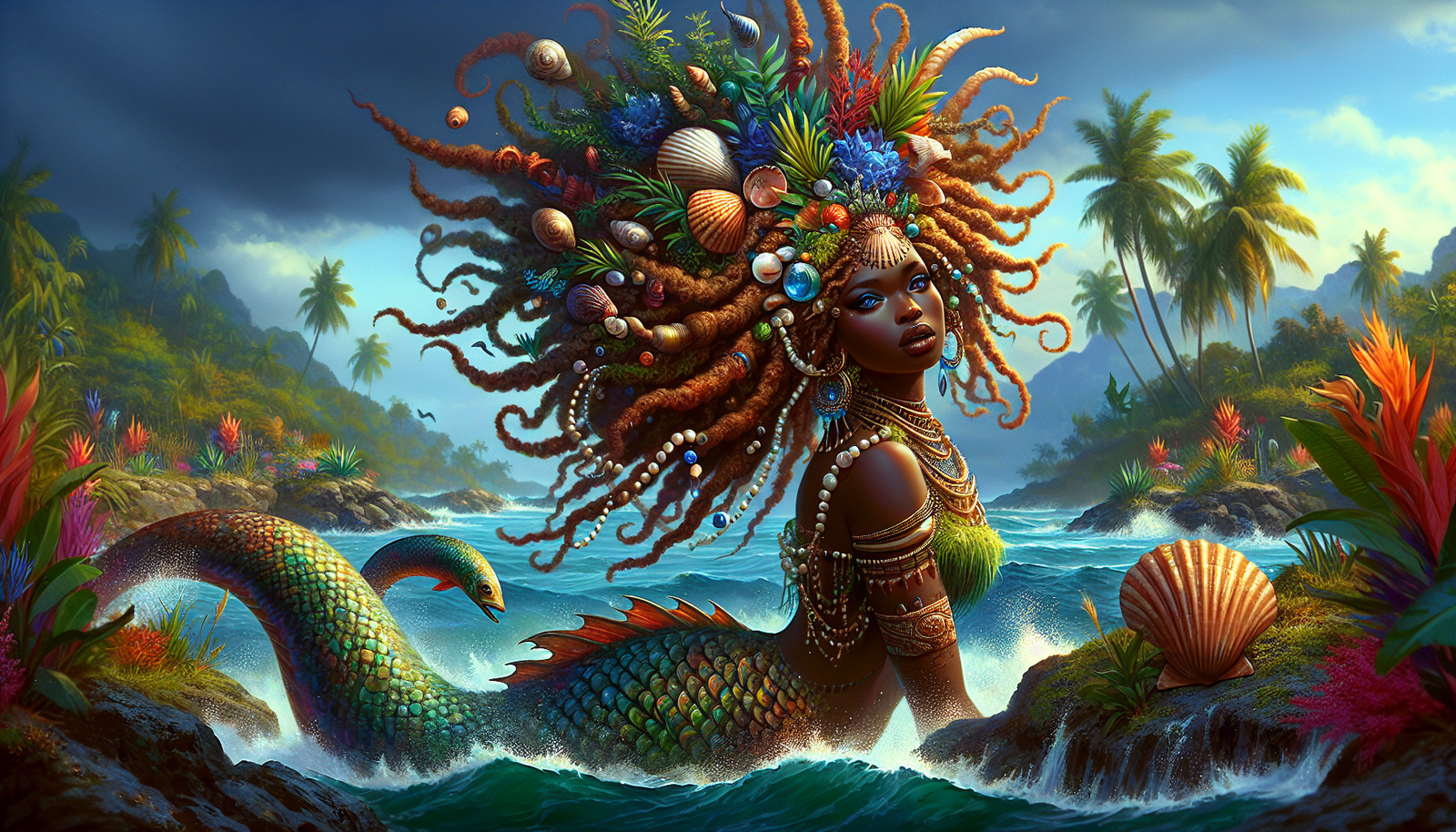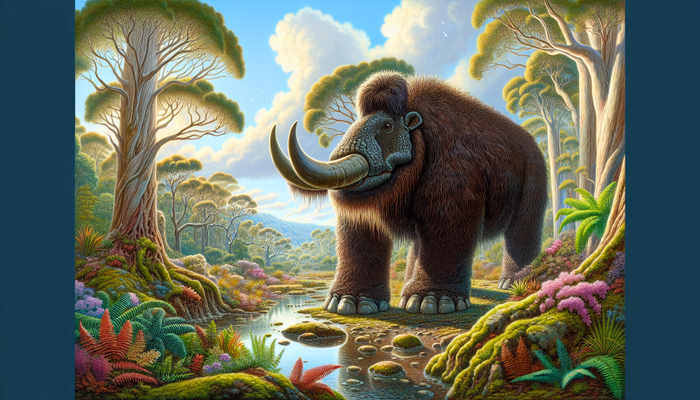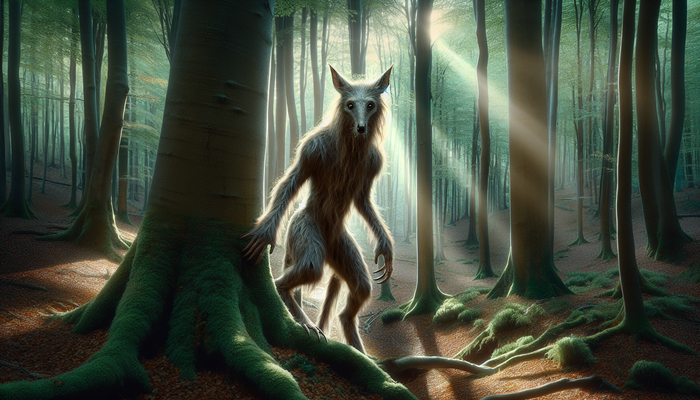Deadly Allure of Africa's Evil Mermaid Spirits

By Dr. Elizabeth Harper, Cryptozoologist
In a small village nestled along the coast of West Africa, a young mother's anguished cries pierce the night air. Her child, a curious little girl who had wandered too close to the water's edge, has vanished without a trace. As the villagers search frantically for the missing child, whispers of an ancient terror ripple through the community: the mermaids have claimed another innocent soul.
This chilling tale is but one of countless stories woven into the rich tapestry of African folklore, where mermaids are far from the benevolent, singing creatures of Western imagination. In the traditional beliefs of many African cultures, these enigmatic spirits embody the duality and unpredictability of nature itself, capable of bestowing blessings and wealth upon their devotees, but equally prone to unleashing destruction and sorrow upon those who cross their path.
As a researcher who has dedicated much of my life to unraveling the mysteries of the natural world, I find myself irresistibly drawn to these dark and complex legends. Through meticulous study of historical accounts, indigenous lore, and contemporary eyewitness testimonies, I aim to shed light on the true nature of these mermaid spirits and the enduring power they hold over the imaginations and lives of people across the African continent.
The Enigmatic Mami Wata: Queen of African Mermaids
At the heart of African mermaid mythology stands the figure of Mami Wata, a powerful water deity revered and feared in equal measure across West and Central Africa. With roots stretching back to ancient water spirit traditions, Mami Wata is typically depicted as a strikingly beautiful woman with the tail of a fish or serpent, her long, flowing hair adorned with shells and pearls.
Yet beneath this alluring exterior lies a complex and often contradictory nature. On one hand, Mami Wata is associated with wealth, fertility, and healing, her blessings sought by those who wish to prosper in business, conceive children, or overcome illness. Devotees erect shrines in her honor, offering gifts of jewelry, perfume, and other luxuries to curry her favor.
But there is a darker side to Mami Wata's power, one that speaks to the dangers of temptation and the consequences of crossing the line between reverence and obsession. In many tales, she is portrayed as a seductress, luring men to their doom with her hypnotic beauty and promises of riches. Those who fall under her spell are said to be driven to madness, compelled to forsake their families and worldly possessions in pursuit of her elusive affections.
These cautionary tales serve as a reminder of the fine line between devotion and destruction, and the perils of succumbing to desires that can ultimately consume us. As one Ghanaian proverb warns, "Mami Wata's embrace is like the ocean: it can cradle you or crush you."
The Sinister Sisterhood: Other Malevolent African Mermaids
While Mami Wata may reign supreme in the pantheon of African mermaids, she is far from alone in her capacity for both benevolence and malevolence. Across the continent, a sinister sisterhood of water spirits lurks in the depths, their legends speaking to the primal fears that have haunted humanity since time immemorial.
The Mondao of Zimbabwe
In Zimbabwe, the Mondao are spoken of in hushed tones, their very name evoking images of terror and despair. These mermaids are said to inhabit the rivers and lakes of the region, lying in wait for unsuspecting swimmers and fishermen. With lightning speed, they drag their victims beneath the surface, their fates sealed in a watery grave. Some legends even speak of entire villages held hostage by the fear of the Mondao, their lives and livelihoods forever altered by the threat that lurks just beneath the water's surface.
The Kaaiman of South Africa
Further south, in the rivers and estuaries of South Africa, the Kaaiman mermaids are whispered to prowl, their appearance as terrifying as their deeds. With razor-sharp teeth and eyes that glow an eerie red, these creatures are said to lure travelers to their doom, their haunting cries echoing through the night as they claim their prey.
The Mamba Muntu of East and Central Africa
And in the heart of East and Central Africa, the Mamba Muntu are feared for their power over the very elements themselves. These serpentine mermaids, with the upper body of a woman and the tail of a snake or fish, are believed to control the weather, summoning storms and droughts at will. They are also said to be the bringers of disease, their mere presence enough to strike down entire communities with illness and misfortune.
These tales of malevolent mermaids serve as a potent reminder of the capricious nature of the spirit world, and the dangers of trespassing into domains where humans are but helpless interlopers. They speak to the primal fear of the unknown, the terror of the deep, and the uneasy relationship between humanity and the natural world.
The Dark Legacy of the Transatlantic Slave Trade
As I delve deeper into the history of African mermaid lore, I cannot help but be struck by the ways in which these legends have been shaped by the profound trauma of the transatlantic slave trade. In the oral traditions of many African diaspora communities, mermaids are said to have played a complex and often contradictory role in the lives of the enslaved.
Yemoja: Mother of the Diaspora
The Yoruba people of West Africa speak of Yemoja, a powerful water deity who is said to have followed the first enslaved Africans to the Americas, offering them comfort and protection in their darkest hours. In the Yoruba tradition, Yemoja is seen as a mother figure, a source of strength and resilience in the face of unimaginable suffering.
Lasirèn: Drowner of the Disrespectful
But other tales paint a more ambivalent picture of the mermaid's role in the slave trade. In Haiti, the fearsome Lasirèn is believed to have the power to drown those who disrespect her, a chilling echo of the countless lives lost in the Middle Passage. Some legends even suggest that mermaids may have conspired with slave traders, luring the enslaved to their doom with false promises of freedom and salvation.
Yet even in these darker tales, there is a glimmer of resistance and resilience, a testament to the unbreakable spirit of the African people. The mermaid's ability to navigate between the realms of land and sea, to shape-shift and adapt to new environments, mirrors the incredible strength and adaptability of African cultures in the face of unimaginable adversity.
In many ways, the mermaid has become a symbol of the African diaspora itself, a reminder of the enduring power of African traditions and the unbreakable bonds of family and community that have sustained generations through the darkest of times.
The Abduction of Innocents: Mermaids and Child Theft
Perhaps the most chilling aspect of African mermaid lore is the pervasive belief that these creatures are responsible for the abduction and disappearance of children. Across the continent, tales abound of mermaids lurking near rivers, lakes, and coastlines, waiting to snatch up unsuspecting little ones who stray too close to the water's edge.
In some stories, the mermaids are said to drag their young victims down into the murky depths, drowning them in their underwater lairs. Other legends suggest a fate perhaps even more terrifying: that the children are transformed into mermaids themselves, doomed to spend eternity in servitude to the water spirits.
These tales of child abduction are not mere fantasy; they reflect the very real dangers that have long threatened the lives of African children. From the perils of the natural world to the horrors of war, famine, and disease, the specter of loss and separation has loomed large in the African experience.
But the mermaid legends also serve another purpose: as cautionary tales, warning children of the dangers that lurk beyond the safety of home and hearth. By instilling a healthy fear and respect for the power of the natural world, these stories help to keep young ones close to their families and communities, where they can be protected and nurtured.
At the same time, the idea of the mermaid as a child-stealer speaks to the deep-seated anxieties that have long haunted the African psyche. In a world where the forces of nature and the whims of fate can snatch away a child's life in an instant, the mermaid becomes a potent symbol of the capricious and often cruel nature of existence itself.
Mermaids in African Art and Popular Culture
The enduring power of African mermaid mythology is nowhere more evident than in the vibrant artistic traditions of the continent. From ancient rock paintings to contemporary sculpture, the image of the mermaid has long captivated the imaginations of African artists, serving as a potent symbol of the complex relationship between humanity and the natural world.
Traditional African Mermaid Art
In the traditional art of many African cultures, mermaids are depicted in a wide range of forms and styles, reflecting the diversity of beliefs and practices across the continent. In some cases, they are portrayed as beautiful and alluring, their sinuous forms adorned with intricate patterns and jewelry. In others, they are depicted as fearsome and monstrous, their features distorted and exaggerated to emphasize their otherworldly nature.
These artistic representations serve not only as a means of storytelling and cultural expression but also as a way of passing down knowledge and wisdom from one generation to the next. Through the creation and sharing of mermaid art, African communities have been able to preserve and celebrate their rich mythological heritage, even in the face of tremendous social and cultural upheaval.
Mermaids in Contemporary African Culture
In recent years, the figure of the mermaid has also found new life in African popular culture, from literature and music to film and television. In works such as Nigerian author Nnedi Okorafor's novel "Lagoon" and Ghanaian musician Atongo Zimba's song "Mami Wata," the mermaid has been reimagined and reinterpreted for a new generation, her enduring power and mystery as captivating as ever.
These contemporary depictions of mermaids often draw upon traditional African folklore while also engaging with the complex realities of modern African life. They speak to the ongoing struggle to balance the demands of tradition and modernity, the pull of the past and the promise of the future. Long before Disney's 'The Little Mermaid' remake, Black mermaids have been a part of African mythology and folklore, showcasing the rich diversity and complexity of these ancient tales.
The Enduring Power of African Mermaid Mythology
As I reflect on the rich and complex world of African mermaid mythology, I am struck by the enduring power of these ancient tales to speak to the deepest fears and desires of the human heart. For centuries, these legends have served as a way for African communities to make sense of the world around them, to grapple with the mysteries and challenges of existence in a often harsh and unforgiving landscape.
At their core, these mermaid stories are a testament to the incredible resilience and adaptability of African cultures, their ability to endure and thrive in the face of unimaginable adversity. Like the mermaids themselves, African communities have long been forced to navigate between different worlds, to shape-shift and adapt in order to survive.
But the mermaid is also a potent symbol of the duality and unpredictability of the natural world, a reminder of the delicate balance between life and death, creation and destruction. In a world where the forces of nature can be both nurturing and deadly, the mermaid embodies the idea that beauty and danger often go hand in hand.
For those of us who study and engage with African mermaid lore, these stories offer a window into the rich and complex world of African mythology, a chance to deepen our understanding and appreciation of the incredible diversity and resilience of African cultures.
But they also serve as a warning, a reminder of the dangers of trespassing into realms where we do not belong, of the perils of succumbing to temptation and desire. In a world where the siren song of greed and exploitation threatens to lure us ever closer to the brink of destruction, the mermaid's tale is more relevant than ever.
As we navigate the challenges and uncertainties of our own time, we would do well to heed the wisdom of these ancient stories, to approach the natural world with humility and respect, and to remember that even the most alluring of creatures may conceal a deadly sting.
From Bigfoot to UFOs: Hangar 1 Publishing Has You Covered!
Explore Untold Stories: Venture into the world of UFOs, cryptids, Bigfoot, and beyond. Every story is a journey into the extraordinary.
Immersive Book Technology: Experience real videos, sights, and sounds within our books. Its not just reading; its an adventure.



























